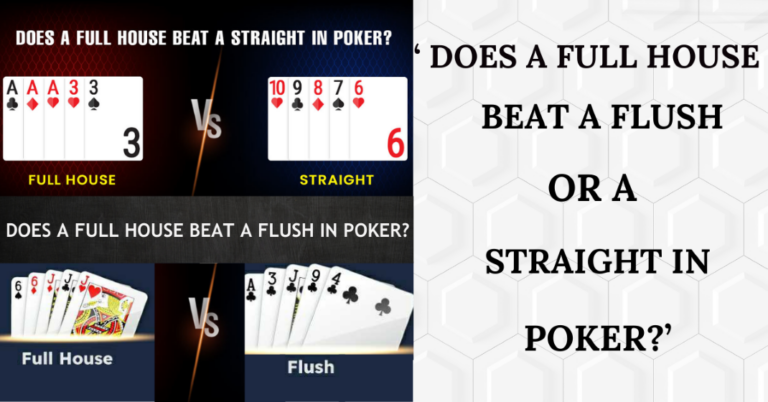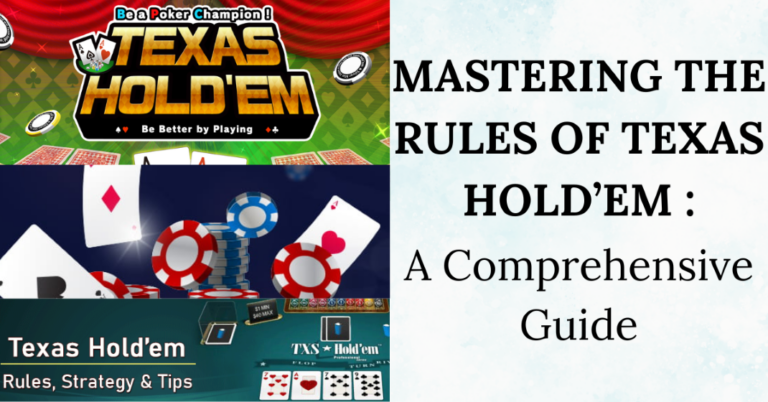Poker Starting Hands Chart (Complete Guide And Rankings)
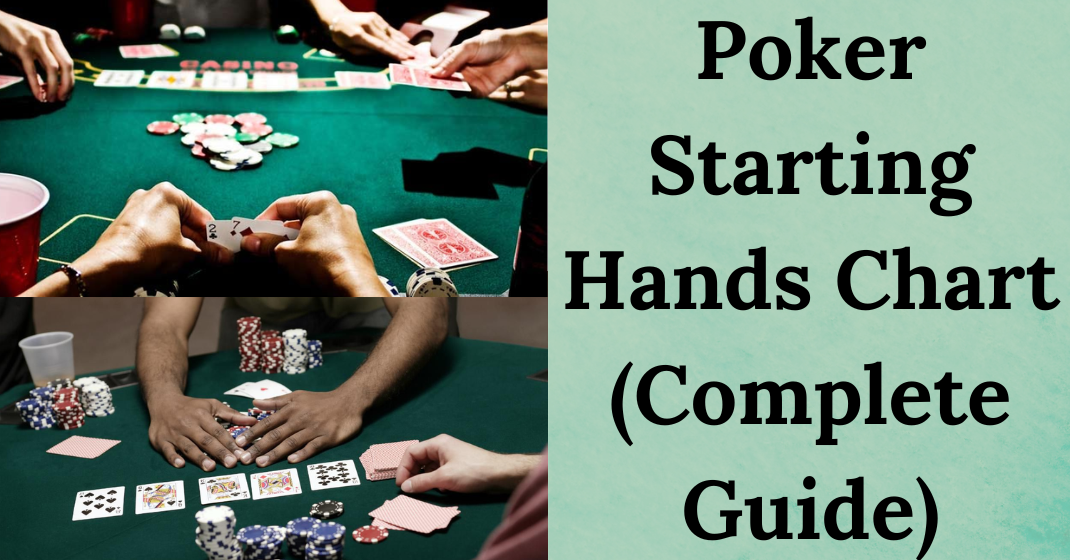
Poker starting hands, also known as hole cards or pocket cards, refer to the two cards initially dealt to each player at the beginning of a hand in Texas Hold’em poker. Choosing the right starting hands is critical as it sets the foundation for your strategy and determines how you play each hand. This article provides a complete guide to poker starting hands, including a starting hands chart, an overview of hand strengths, and how to adjust your starting hand selections.
Understanding Poker Starting Hands
Your starting hand dictates your chances of winning in poker. Texas Hold’em has 169 possible starting hand combinations. However, not all starting hands are created equal. As a winning poker player, you should only be playing the top 10-15% of all starting hands based on strength and position.
Proper starting hand selection is vital in the Texas Hold’em strategy for two reasons:
- It prevents you from getting into tough spots post-flop with weak holdings.
- It allows you to maximise value from your strongest starting hands.
Use the below poker starting hands chart to determine which hands to play based on position and game dynamics:
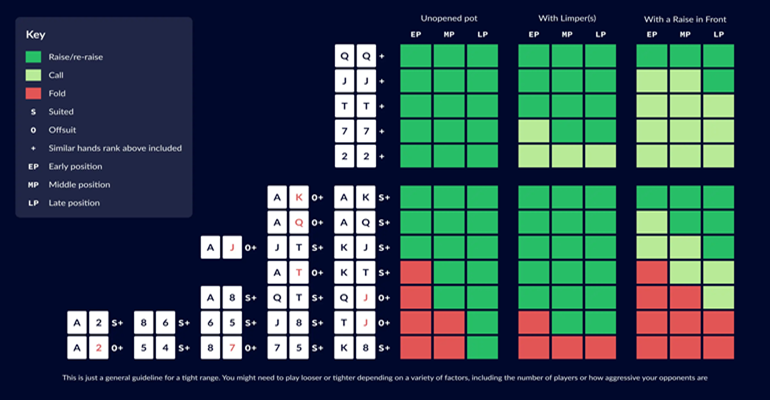
Key:
- Early Position (EP) = First three seats after big blind
- Middle Position (MP) = Next three seats at the table
- Late Position (LP) = Last four seats at the table
This chart separates hands by pairs, suited cards (denoted by “s”), and offsuit cards. The “+” indicates to play those pocket pairs as well. You can play more hands in a late position since you act after more players. The early position has a tighter range since more players act after you.
Also Read: How To Bet On Football – Ultimate Football Betting Guide
Poker Starting Hands Ranking And Categories
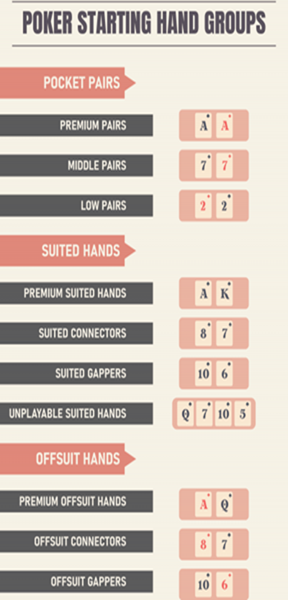
Understanding how to categorise different starting hands based on ranking and strength is critical to selecting the right hands to play. Texas Hold’em starting hands primarily fall into the following categories – pocket pairs, suited cards, and offsuit cards. Let’s explore each category further.
Pocket Pairs
Pocket or wired pairs refer to when your two-hole cards are a pair (e.g. 77, TT, AA). Pocket pairs are strong starting hands in Texas. Hold’em since you enter the hand with a pair from the get-go. However, some pocket pairs are stronger than others.
Premium Pocket Pairs
Hands like AA, KK, QQ, JJ and TT are premium holdings with strong value regardless of your position or any other dynamic. You’ll want to aggressively play these hands preflop by raising and re-raising to build a big pot when you hit a set. Big pocket pairs aim to win the pot before the flop or improve to a very disguised, powerful set post-flop.
Mid Pocket Pairs
Pocket pairs like 99, 88, and 77 are still powerful hands that can withstand heat preflop. However, they rank just below premium pairs regarding raw power and value. With mid-pocket pairs, you’ll be trying to land a sneaky set but must tread more carefully if you face aggression. When raised, these hands play well from the mid-late position, but it can be risky to call raises within the earlier position.
Small Pocket Pairs
Low pairs like 66, 55, 44, 33, and 22 look great but can be highly tricky holdings to play profitably outside of implied odds situations. Without the odds to set mine, these hands essentially rely purely upon landing a set on the flop as their primary value. Small pocket pairs thrive only when effective stacks are deep since hitting a set pays off massively versus weaker top pairs and overpairs.
Suited Cards
Unlike pocket pairs of equivalent rank, no two suited hands are quite the same. But we can broadly categorise suited hands based on high card strength and consecutiveness.
Broadways
Also referred to as big slick hands, premium suited broadways like AKs, KQs, and AQs contain some combination of ace or king suited. Having these cards connected by suit and their inherent high card strength makes them very powerful starting hands worthy of opening raises from any position.
Connectors
Suited cards that connect consecutively, like 76s, 65s, 54s, and 43s, are called suited connectors. By connecting strongly with each other, these hands can more easily flop straights and flush draws. The power in these hands lies in their potential and future improvement capability to disguise yet powerful hands.
Gappers
Suited gapper hands like 86s or 75s involve a gap between the card ranks while retaining the power of their suit connectivity. Having a gap makes them more disguised, allowing suited gapper hands to connect powerfully on dynamic boards. Every suited card combo brings the critical possibility of flopping strong draws, hidden straights, and nut flushes.
Offsuit Cards
With no flush potential absent in offsuit holdings, raw power lies in the hand’s high card strength. Let’s examine offsuit hand categories further.
Broadways
Just like premium-suited Broadway hands, offsuit combos like AKo and KQo containing ace, king or queen have inherent strength by consisting of high card values. The only downside is these hands cannot make flushes.
Mid Cards
Decent mid-ranked offsuit combos like J8o, 97o, and 86o occasionally warrant opening, depending on position and table dynamics. They can flop strong top pairs and two pairs. However, lacking suit connectivity means the value mostly derives from high card power, resulting in less potential than most other starting hands.
Rags
Extremely low cards with minimal connectivity and strength like 53o, 72o, and 42o have little upside. While all hands technically ‘can’ win, such offsuit rag holdings should rarely be played regardless of scenario or position. You’ll rely purely on complete longshot luckyouts rather than inherent equity.
In short, the three major buckets for evaluating Texas Hold’em hands are:
Grouping hole card combinations this way simplifies ranking hand strength relative to the 169 total starting hands possible. Understanding these core hand categories accelerates your learning curve for smart decision-making preflop.
Also Read: How Does Sports Betting Work: Betting Odds Explained!
Positional Play and Hand Selection
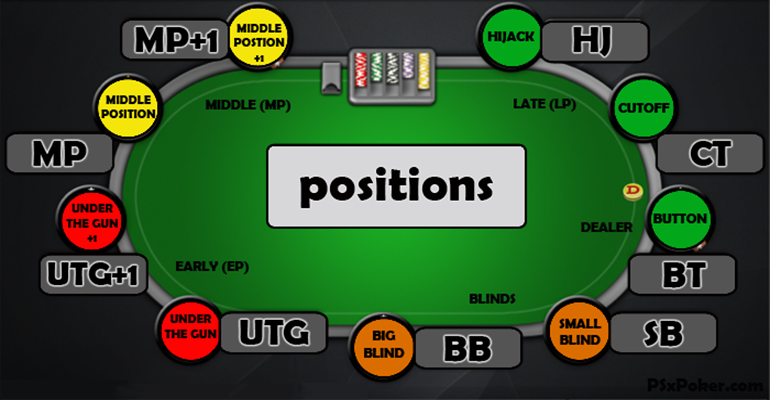
Your position relative to the blinds and button is an important factor influencing which hands you play. Texas Hold’em strategies often revolve around perfecting positional awareness and adapting your ranges accordingly.
Early Position
Early position (EP) refers to the first few seats to act post-flop after the blinds, including UTG, UTG+1, and sometimes UTG+2. Being first to act with multiple players left behind you is quite disadvantageous. You’ll face tough decisions out of position without ammunition about opponents’ holdings or actions.
From EP, stick to playing only premium pockets, big offsuit broadways, and the occasional wired mid-pocket pair situationally.
Recommended EP opening hands
- High Pocket Pairs: AA, KK, QQ, JJ, TT, 99
- Big Broadway Hands: AKo, AQo, AJo, KQo
- Very Strong Suited Hands: AKs, AQs, QQs
Notice almost all are big cards or big pairs. When effective stacks are deeper, mixing in a few other strong-suited combos like JJ+ or TT+ is fine as well. But overall, this gives you a solid early position opening range baseline.
Middle Position
After getting past the earliest positions, the middle position (MP) lets you somewhat open up your starting hand ranges. Middle position refers to MP1, MP2, and MP3 – essentially the next 3 seats after the early position at a 9-handed table.
MP requires balancing your value range against your bluffs effectively.
Sample MP opening hands
- Mid Pockets: 88-77
- Offsuit Broadways: ATo+, KJo+
- Many Suited Aces: A2s+, A5s+, A8s+
- Suited Kings: K9s+, KJs+, KQs
- 1-Gappers: QJs+, JTs+, T9s+
- 2-Gappers: 87s+, 86s+, 76s+
This gives you a good mixture of playable hands with equity, draws, pairs, and blockers from the middle position.
Late Position
Sitting in a late position (LP – cutoff, button, and blinds) allows you to start playing your widest ranges. Being last to act preflop before witnessing any action grants the tremendous ability to play far more speculative holdings.
Most pocket pairs, suited cards, one/two-gappers, and offsuit Broadway cards become profitable openings depending on your opponent’s tendencies.
Common LP opening hands
- Most Pocket Pairs: 33+, 22
- Offsuit Cards: 76o+, 65o+, 54o+
- Suited Cards: 32s+, 53s+, 75s+, 86s+, J8s+
- Broadways: A5o+, K7o+, Q8o+, J8o
As witnessed, late position enables you to introduce an abundance of playable hands with speculative qualities – pockets, suited cards, connectors, etc.
The position is everything regarding which poker starting hands warrant opening raises, calling versus 3bets, set mining, and playing draws. Learn these guidelines and adjust accordingly!
Table Dynamics and Adjusting Your Strategy

Although positional guidelines provide a good baseline for making poker starting hand decisions, that’s not the only factor at play. The styles and tendencies exhibited by players at your table also significantly impact viable hand ranges.
Passive Tables
Passive tables frequently consist of weaker, recreational opponents looking to see flops and don’t raise preflop as frequently. Playing condensed ranges is less effective when tables consist of many limpers and multi-way pots. You can significantly broaden your opening ranges in virtually every position.
Against passive opponents:
Passive opposition doesn’t fight back frequently enough to punish wider opening ranges. Take advantage by playing more hands with implied odds value.
Also Read: What Beats What In Poker? Poker Hand Rankings Explained
Aggressive Tables
In contrast, playing against frequent preflop 3-bettors incentivises a more streamlined, linear strategy. You want to avoid bloating pot sizes or making costly errors with dominated speculative hands on aggressive tables.
Facing aggressive regulars:
Against aggressive opposition, winning comes down to maximizing your strong-made hands and avoiding thinly disguised equity situations with hands requiring help. Remove bluffs from ranges and focus primarily on big cards and big pairs instead, along with some blockers.
Exploiting Table Dynamics
Most players fall into using static poker starting hand ranges without tailoring their strategies appropriately against differing player types. The best poker players remain alert to noticing table dynamics and aggregating opens/folds data to inform macro-level adjustments.
Make it a point to determine if players are constantly:
- Passive calling stations
OR - Frequent preflop 3-bettors
Compliment your starting hands chart ranges against whatever player tendencies manifest at your table. Widen up the hands you play on passive tables, and tighten up dramatically facing aggression. This fluidity produces a thinking player ready to exploit competition one table at a time!
Conclusion
Proper hand selection sets the foundation for winning poker strategy. Position and table dynamics should adjust your playable hands. Learning game theory optimal starting hands takes time and practice. Use the poker starting hands chart outlined above as a baseline for your hand decisions. But also learn to adjust those ranges based on various other essential factors highlighted in this article.

